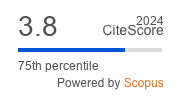Article | Open Access
Opportunities and Challenges of Municipal Planning in Shaping Vertical Neighbourhoods in Greater London
| Views: | 2322 | | | Downloads: | 2372 |
Abstract: Production of housing in London is driven by three factors: a housing crisis that requires the construction of more than 1.6 million homes by 2025, a model of social housing production mainly delivered through private developers’ contributions, and a metropolitan governance structure through which housing targets are allocated to municipalities with highly unequal pressures, being inner London boroughs the ones with the highest targets to meet. In the context of a non-prescriptive and liberalised planning system, this threefold scenario has resulted in the construction of unprecedented residential landscapes, dominated by high-density and high-rise buildings. Tower Hamlets Council is at the forefront of this challenge both in the UK and Europe and is trying to develop planning tools to shape them. This article discusses three innovative supplementary planning documents (SPDs) produced by the policy team that have had unequal success in shaping different aspects of this form of development: the South Quay Masterplan SPD, the High Density Living SPD, and the soon-to-be-adopted Tall Building SPD. A comparative analysis of these planning documents and the perception of urban planners working at different stages of the planning process on the effectiveness and limitations of these SPDs in shaping vertical neighbourhoods shed light on the key factors influencing the role municipal planning can have in delivering a built environment that supports residents’ quality of life. By doing so, this case study illustrates the limitations of municipal planning and planners in local government, pointing to more structural and strategic issues of metropolitan governance.
Keywords: local planning authorities; London; metropolitan governance; tall buildings; urban planners
Published:
© Lucía Cerrada Morato. This is an open access article distributed under the terms of the Creative Commons Attribution 4.0 license (http://creativecommons.org/licenses/by/4.0), which permits any use, distribution, and reproduction of the work without further permission provided the original author(s) and source are credited.


